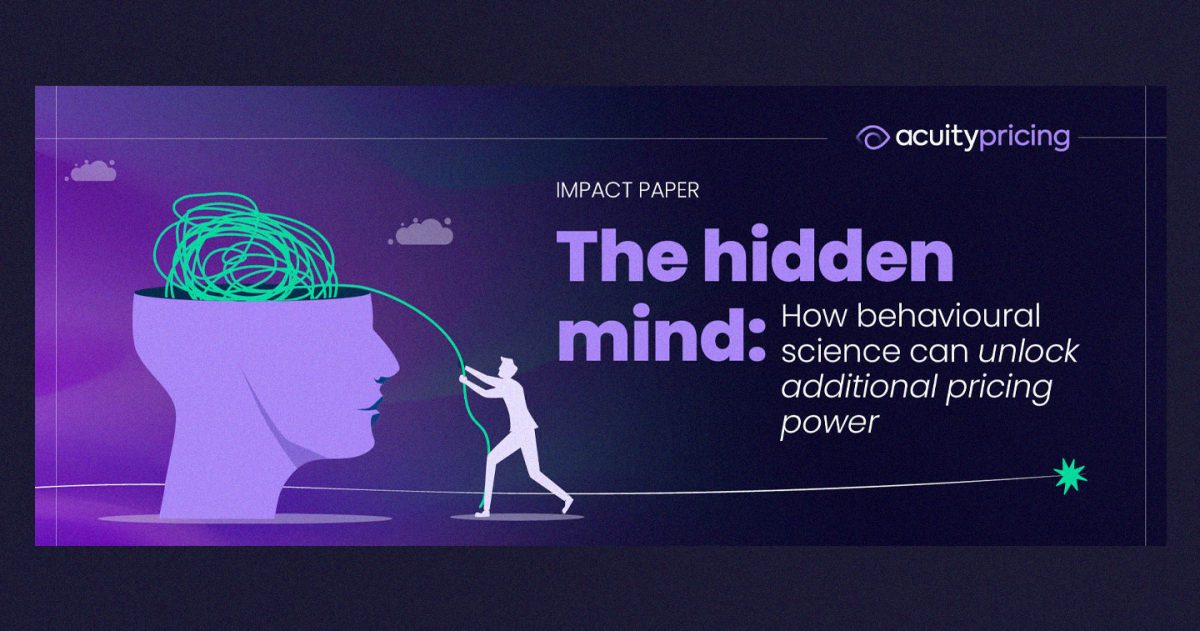LONDON, UK – In a world where pricing can make or break brand success, Acuity Pricing, the pricing data intelligence platform for top-tier retailers and consumer brands, has launched a groundbreaking report: The Hidden Mind on Pricing: How Behavioural Science Can Unlock Additional Pricing Power. Authored in collaboration with acclaimed behavioural scientist Richard Shotton, the report explores how deep psychological insights can be used to drive more effective pricing strategies and unlock untapped profitability.
Backed by a decade of behavioural research from Europe, Canada and North America, the report consolidates ten practical, evidence-based approaches that can be easily and affordably implemented by pricing teams, marketers and brand strategists.
Sophie Bailey, Managing Director, Acuity Pricing, said: “Today, pricing success comes from being informed and intentional; using data not just to keep up with the market, but to lead it. This study explores how the quirks of human decision-making can be powerful tools for smarter pricing, and greater persuasion.”

Richard Shotton, Behavioural Scientist and Author, added: “It’s tempting to base pricing on theassumption that we, people, are rational calculators who calmly weigh cost and value. But the reality is, humans don’t shop with spreadsheets – we shop with shortcuts and subconscious biases.”
The report identifies ten key behavioural science principles split across two main themes: how to set prices and how to reduce price sensitivity.
How to Set Prices:
1. Present Bias
Consumers value the present more than the future. Offering deferred payments or low upfront costs can significantly reduce price resistance. Installment options or “buy now, pay later” models capitalize on this bias.
2. Charm Pricing
Pricing just below a round number — such as $9.99 instead of $10 increases conversion due to the “left-digit effect.” A study by e-commerce platform Gumroad found a 51% lift in sales when using .99 pricing, without diminishing perceived product quality.
3. Precise Pricing
Using specific figures (e.g., $20.12 rather than $20) can make a price seem more calculated and therefore more trustworthy. Consumers often interpret rounded prices as inflated or arbitrary.
How to Reduce Price Sensitivity:
4. Price Relativity
Shoppers don’t assess prices in isolation. Highlighting pre-discount prices or positioning products next to higher-priced items can reshape perceptions of value.
5. Extremeness Aversion
Consumers tend to choose the middle option when presented with a trio. Introducing a third, more premium tier can encourage customers to trade up and improve margins.
6. The “Order Effect”
First impressions matter. Presenting the most expensive items first – whether in-store or online makes subsequent options feel more affordable by comparison, leveraging the anchoring effect.
7. Decoy Effect
Adding a third, less attractive option can make a target product appear more favourable. This tactic simplifies decision-making and nudges consumers toward a desired choice.
8. Unit Reframing
Consumers respond to smaller, more digestible price formats. Framing prices per unit such as “only $1.50 a day” can dramatically improve perceived affordability.
9. Differential Price Framing
Rather than showing the full price of a premium option, display just the incremental cost over a base model. This subtle shift can increase upgrades and boost average order value.
10. Price as a Badge for Quality
Price shapes perception. Products that are frequently discounted may erode their own quality cues in the long term. Premium pricing even if aspirational, can elevate brand status and influence customer satisfaction.
Acuity Pricing’s The Hidden Mind on Pricing provides a rich toolkit for marketers, pricing strategists, and brand leaders looking to turn behavioural insight into commercial advantage. The report is available to read in full here.








